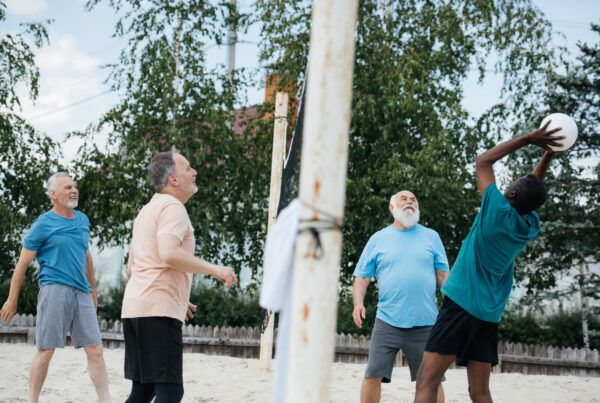”Question: Chronic pain is difficult to live with. How do I move when I am managing pain?
Reading time: 4 Minutes
MWi Hack:
- Learn more about chronic pain and how you can apply exercise to help manage your pain levels.
MWi Summary:
-
-
- Chronic pain is about the sensitivity of the nervous system more than structural or tissue damage.
- Exercise decreases pain levels and increases ability to complete daily activities.
- When exercising, it’s important to remember the following:
- Choose something you enjoy
- Some discomfort is acceptable and normal with activity
- Increase exercise volume before intensity
-
Chronic pain (also known as persistent pain) is pain that persists beyond the expected healing time of an injury. Unlike acute pain which is caused by tissue damage, chronic pain or persistent pain is less about the structural or tissue damage and more about the sensitivity of the nervous system and ‘non tissue related factors’.
Significant research has shown that exercise is an essential aspect in the treatment of chronic pain. Often when we experience chronic pain we avoid activity in an attempt to not cause pain fl are ups. However we know that gradually over time people experiencing chronic pain become less able to complete activities that were previously enjoyed, for example walking, and commonly also have difficulties in completing activities of daily living such as housework.
How does exercise help with chronic pain?
Research has shown that exercise can be an effective way to reverse this downward cycle of deconditioning and worsening pain, and gradually over time help those with chronic pain engage more in activities of enjoyment and essential activities of daily living with greater ease.
Things to remember
- Remember that ‘Exercise is Medicine’ and is an important daily strategy used to assist in the management of pain conditions.
- Stretch to cool down, not warm up, and do short bursts of exercise, not long stretches.
- It is important to start slowly when beginning an exercise program, and avoid pushing into stronger pain. It is often useful to use the 0-10 scale to monitor your pain levels while exercising.
- If pain levels increase by more than 2 points from baseline you should stop and modify that exercise, to ensure that you do not cause a fl are up of your pain.
What type of exercise is best for chronic pain?
Exercise Right recommends combining multiple forms of exercise for chronic pain, including:
- Stretching is important at least once a day to help increase flexibility, loosen tight or stiff muscles, and improve your range of motion. Stretching everyday will help ease your everyday movements.
- Strengthening exercises to help build strong muscles, for example, squats, wall push ups or bicep curls.
- Cardiovascular exercises such as walking, swimming or bike riding provide light aerobic exercise. If working out in a gym, try an elliptical trainer (which is lower impact than a treadmill).
Exercise tips
- choose an exercise you enjoy
- consider some aerobic exercise in your program
- some discomfort is acceptable and normal with activity
- modify exercise that causes pain to continually increase
- start slowly and be consistent across days
- don’t do more on good days and less on bad days
- increase exercise volume before intensity
- flare-ups reflect a protective strategy and not a sign of damage – reduce your activity levels, avoid excessive rest and continue with manageable activity






